The Coalition submitted its FY 2022 NPS Budget Recommendations as part of the official record for the House Natural Resources Subcommittee hearing entitled “Building Back Better: Examining the Future of America’s Public Lands.”
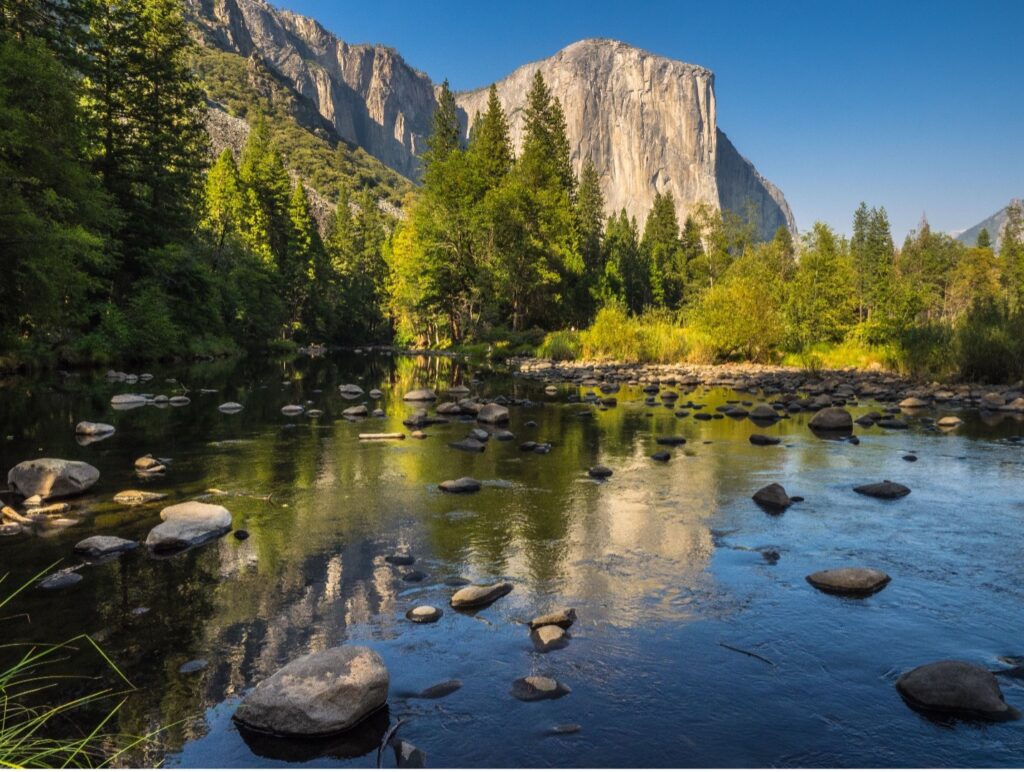 FY 2022 National Park Service Budget
FY 2022 National Park Service Budget
Recommendations from the Coalition to Protect America’s National Parks
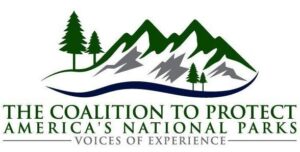
EXECUTIVE SUMMARY
At a time when the National Park Service is managing 423 national park sites with annual visitation exceeding 327 million in 2019 prior to the Covid park shutdowns, the need for additional staff to manage these sites and provide visitor services is greater than ever. Further, the ability of park units to address critical natural and cultural resource challenges has diminished as program and regional office staffing has been reduced. In addition, the service’s management of its grant and technical assistance programs has been impacted as fewer staff handle even more programs that Congress has established.
To address these staffing and program needs, the Coalition to Protect American’s National Parks (the Coalition) recommends the following additional funds be added to the NPS budget in FY 2022 as the beginning of an extended commitment to address the decline of nearly 3,500 in NPS staffing over the past decade:
| Operation of the National Park Service (ONPS) To add 500 FTEs in parks and program offices | + $50 million |
| Addressing Climate Change To provide analyses to park managers and fund projects | + $6 million |
| Oceans and Coastal Resources To add experts to address park needs and complete priority restoration efforts | + $7.5 million |
| Natural Resource Project Funding To complete the highest priority natural resources management and research needs | + $21 million |
| Natural Resource Project Funding To complete the highest priority natural resources management and research needs | + $21 million |
| Landscape and Seascape Conservation To fund Cooperative Ecosystem Study Units (CESUs) and Research Learning Centers | + $3 million |
| Completing the Cultural Resource Challenge To add funding to four key areas of work noted in the following related document | + $25 million |
The recommendations above are for the first year of what the Coalition sees as a longer-term commitment to addressing the National Park Service’s programs to protect our national parks and provide visitor services for future generations. Details of the complete funding needs are found in the following pages.
KEEPING THE PROMISE TO PROTECT OUR NATIONAL PARKS
For over a century, the National Park Service (NPS) has been protecting our nation’s important natural, historical, and cultural sites for the public to enjoy unimpaired for future generations. During this time, the number of sites entrusted to the care of the NPS has grown to 423 along with annual visitation that exceeded 327 million in 2019 prior to the Covid park shutdowns.
The stewardship of these park sites has become increasingly difficult over the past decade due to several factors, including flat budgets that have not been adjusted for inflation, parks having to absorb fixed costs associated with higher rents and utility bills; increased staffing costs through annual pay raises and the need for more seasonal staff to handle the busier shoulder seasons; and more expensive health and pension benefits. These added costs have occurred at a time when visitation increased by 15% between 2009 and 2019, which has seriously eroded the Park Service’s capability to accomplish its core functions of protecting park resources and serving park visitors. Further, since 2009, Congress has directed the NPS to manage 31 new parks, 5 more national trails, and 9 new wild and scenic rivers, while also coordinating assistance for 4 new affiliated areas, 15 additional national heritage areas, and 8 new grant programs.
A few examples illustrate the impact on park operations and visitation. Acadia National Park’s visitation increased from 2.3 million in 2010 to over 3.5 million in 2019. Meanwhile, the park budget (adjusted for inflation) has gone down 12-14%. Between 2010 and 2019, Rocky Mountain National Park’s visitation increased by 58% while staffing decreased by 16% (a loss of 52 FTEs), which is causing severe shortfalls in visitor services, routine cleaning, and maintenance. And at Zion National Park, visitation has gone from 2.3 million to 4.5 million since 2010. While the dollar amount of Zion’s budget is essentially the same in FY 2021 that it was in FY 2010, the buying power has gone down 14% when you take into account inflation, as well as fixed and related costs.
To stay within budget, many national parks and program offices have been unable to fill vacant positions, resulting in fewer people to do the work needed to provide routine maintenance, interpretive services, historic preservation and environmental compliance, research and evaluation to address climate change, natural resource protection, law enforcement, search and rescue, and emergency medicine activities. These all are actions that are critical for the NPS to be able to meet the mandate of Congress to protect and preserve park resources for future generations.
It is not only park operations that have suffered through unfilled positions. The program offices found in the headquarters building in Washington, D.C., and in each of the regional offices have seen similar attrition. The small and medium-sized parks have been particularly impacted by these unfilled positions in Washington and the regional offices as those parks do not have their own program specialists with expertise to do various natural and cultural resource work in response to local situations. These parks rely on the regional and national program offices to support them on a regular basis, and that support has been lacking over the past decade when positions are vacant.
And just last year, Congress passed the Great American Outdoors Act that will provide the National Park Service $6.5 billion over the next several years to help address its backlog in deferred maintenance. This will require additional staffing to deal with construction projects that require planning and design, environmental compliance, and contracting, along with project supervision and oversight in order to meet the goals established by the law to complete this work within a relatively short timeframe.
I. ADDRESSING PARK AND PROGRAM OPERATIONS
ONPS Base Funding Requested: $50 million
In FY 2009, NPS appropriations supported 24,444 staff, while the level of NPS staff fell to 20,967 in FY 2019 – a loss of 3,477 employees over the past decade. To reverse this trend, the Coalition requests $50 million be added to the ONPS budget for FY 2022 to allow the hiring of an additional 500 staff to begin a five-year commitment to restoring many of the 3,500 staff lost over the past decade due to insufficient appropriations.
In FY 2009, Congress provided appropriations of $3.275 billion for the National Park Service (NPS). The FY 2020 appropriation of $3.37 billion provided by Congress was the first time the FY 2009 appropriation was exceeded in ten fiscal years. However, according to the Bureau of Labor Statistics consumer price index, inflation has increased by 22.6% since 2009. To keep up with inflation, the NPS would need $4.015 billion in appropriations in FY 2022
While we recognize it will take some time to restore all of the positions that have been lost over the past decade, we urge Congress to begin this process in FY 2022 to ensure the NPS has the people needed to fulfill its responsibilities. This operational funding should be strategically distributed to parks and program offices to remedy lost capacity and to allow new park units to provide basic public services and to adequately protect park resources, as well as to allow regional and program offices to restore positions with people that assist parks with services needed on a regular basis.
KEEPING THE PROMISE TO PROTECT OUR NATURAL LEGACY
The National Park Service (NPS) administers over 400 of America’s most sacred and loved places. For over a hundred years, the men and women of the NPS have worked to fulfill the Organic Act that provides the following mandate to “conserve the scenery and the wild life therein and to provide for their enjoyment for future generations.”
Building from the Natural Resource Challenge funded by Congress starting in 1999, National Parks have built a rich legacy of science-based conservation projects and activities. They have included a sweeping array of initiatives ranging from reintroducing keystone species such as elk and wolves, restoring tens of thousands of acres of degraded critical habitat including majestic giant sequoias and major rivers and wetlands, and installing hundreds of miles of feral animal fencing to protect critically endangered plants and animals. Through leadership, science, creativity, and funding, our parks have been able to make significant headway with some of their most challenging resource issues.
However, just as our park roads, visitor centers, and trails need constant upkeep, our recovering resources also require ongoing maintenance and additional resource efforts to keep them healthy. If new actions are not implemented, these precious areas run the risk of slipping back to degraded conditions once again. NPS nation-wide commitments to these legacy projects and critical resource issues continue to expand every year, while the NPS capacity continues to erode, leaving natural resource managers unable to fulfill their commitments to maintain and protect America’s most beloved places. NPS has made a promise to the American public to take care of these protected sites, and the parks need help in doing so.
The following is a list of major funding needs:
I. ADDRESSING CLIMATE CHANGE
ONPS Base Funding Requested: $6.0 million
Research from U.S. national parks shows that climate change is melting snowpack and glaciers, shifting the ranges of plants and animals, altering wildfire patterns, raising sea levels, and causing other impacts. Continued climate change threatens the health and functioning of plant and animal species, ecosystems, cultural sites, and infrastructure in national parks. Analyses of vulnerability to climate change exist for a very limited set of resources in fewer than half of the national park units.
Funding would: (1) support the Service’s comprehensive efforts to provide scalable analyses to managers on the implications of environmental change for resources from the land/seascape-level to park-level and (2) fund high priority projects in parks designed to add resilience, adaptation, and protection for some of the most vulnerable natural and cultural resources within the National Park System. All national parks are experiencing the effects of climate change, with particular vulnerability among parks at high elevations, high latitudes, in arid lands, and coastal areas. The requested funding would support the preparation of park assessments of natural and cultural resource vulnerabilities to environmental change. Providing analyses of the vulnerability of park resources and infrastructure for all national parks would be a priority. The assessments will guide subsequent resource stewardship efforts and inform decisions on asset planning, management, and investment for park infrastructure.
This increase also provides subject matter expert services to park managers to design adaptation projects and includes $3.5 million in project funds annually. These projects will address the highest priority needs to improve resource (natural and cultural) and infrastructure resiliency and adaptation to environmental change associated with rising sea levels, increased frequency and severity of flood events, thawing of permafrost, catastrophic mega-fires, prolonged drought conditions, and other consequences of environmental change. Examples of projects include modeling and analyses to identify high priority areas to reduce future risks from fire and flooding, as well as design and engineering to adapt and protect historic structures and infrastructure.
Additional detailed information on the Coalition’s recommendations for abetting climate change is available in the Keeping the Promise: Addressing Climate Change section (page 13).
II. OCEAN AND COASTAL RESOURCES
ONPS Base Funding Requested: $14.5 million
The fledgling NPS Coastal and Ocean Program that includes over 84 coastal parks has made remarkable progress in identifying the highest priority issues and making initial progress toward achieving some key objectives. The top critical issues are:
-
-
- Sea Level Rise
- Benthic Habitat Mapping
- Shoreline Sediment Management
- Restoration and Species/Ecosystem Refugia
- Aquatic Invasive Species and Diseases
- Harmful Algal Blooms and other coastal catastrophic events
- Fisheries Management
-
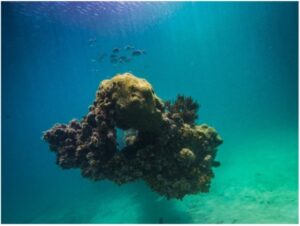
The NPS needs a base increase of $14.5 million to address these high priority issues by funding: 1) a coastal engineer and an oceanographer at the national level to help parks plan for sea-level rise, sea temperature increases, ocean acidification, changing current patterns, and massive storms and waves resulting from climate change; 2) two regional experts to address areas of the country not yet served by dedicated regional staff; 3) equipment (including boats) and field support (including data entry, field collection, lab expenses, partnerships, and task agreements); 4) and priority restoration/refugia protection efforts each year. This increase would enable the NPS to make steady progress in addressing these highest priority issues and to respond to additional, critical threats to park resources such as stony coral tissue loss disease, Crown of Thorn invasions, and abalone withering syndrome, which are emerging ever more frequently and requiring a rapid response.
III. VITAL SIGNS: NPS INVENTORY AND MONITORING PROGRAM ONPS Base Funding Requested: $43 million
Since 2000, about 15 parks with significant natural resources have been added to the National Park System and about 30 more have expanded their boundaries. The new parks have never had funding for inventorying and monitoring (I&M) activities. To expand existing monitoring activities to these parks would cost $4 million.
When monitoring plans were developed, the number of resources that parks requested for monitoring activities far exceeded NPS capacity. Currently, the NPS is unable to monitor all Endangered Species Act (ESA)-listed species as identified in Recovery Plans, for example, due to a lack of funding. Nor are they able to incorporate climate change effects and projections into current monitoring activities, or address emerging issues. Additional funding would also allow NPS to create more derivative products from its data. For example, the NPS could map places where white bark pine stands need to be protected, and planting is most likely to be successful. To expand monitoring activities to include ESA-listed species, habitats at risk due to climate change, and other park needs would cost $18 million.
An initial set of baseline inventories has been conducted at all of the I&M parks. The NPS recently conducted scoping of park inventory needs to prioritize future inventory efforts. The parks currently inventory species and conduct mapping of vegetation and surficial geology but are unable to meet park needs even if efforts were doubled. In addition, the NPS falls far short of inventory needs such as consistent mapping of hazards due to geologic instability, floods, or sea-level rise. Also, parks do not have the capacity to do target inventories to support management actions, such as the creation of a new trail or campground. To expand inventory activities to better serve park needs would cost $8 million.
Currently, I&M activities focus only on the status and trends of select natural resources. The NPS determines and tracks how water quality in a particular stream, for example, changes through time. However, the NPS does a variety of restoration and other activities through invasive species treatments, prescribed fire, post-fire vegetation planting, and more that are not monitored. At present, the NPS does not study the effectiveness of these actions to determine whether they achieved the desired result. Consequently, the NPS does not have the opportunity to learn how to be more effective and efficient in its land management activities. To build effectiveness monitoring into existing I&M activities would cost $13 million.
IV. NATURAL RESOURCE PROGRAM PROJECT FUNDING
ONPS Base Funding Requested: $33 million
Each year, park units request project funding for their highest priority natural resource management and research needs. There is extremely stiff competition for these limited funds, only a handful of projects are funded each year, and many high priority needs go unmet. An increase of $33 million per year along with the program-specific funding identified in this initiative would enable the NPS to make significant progress in addressing the backlog of natural resource project needs. These needs are being systematically identified in comprehensive Resource Stewardship Strategies that are developed for every park unit. Major projects would include restoration of wetland, forest, and stream systems, rehabilitation of denuded landscapes, enhancement of special status species’ habitats, coastal restoration, and elimination of non-native species.
V. COMBATING INVASIVE SPECIES AND DISEASES
ONPS Base Funding Requested: $20.0 million
Invasive species, along with climate change, are the two biggest threats to the NPS mission to protect and preserve our national treasures unimpaired for current and future generations. A base increase of $20 million to the NPS budget is urgently needed to stem the tide of plant and animal invasive species that are dramatically altering ecosystems and reducing the biodiversity in our national parks. Successfully combatting invasive species and diseases is an ongoing effort that requires coordination with private landowners, state and local governments, and international partners. Effective management requires early detection, rapid response, and consistent long-term funding to keep the invasive species in check once a maintenance control level has been achieved.
The NPS has demonstrated the ability to effectively control invasive animals with the injection of funding for initial control and park-base increases to maintain control. Funding is needed to combat many other serious invasive animal and disease threats that are as yet unaddressed. The NPS has effective Invasive Plant Management Teams that help parks manage their most serious infestations. However, these teams are woefully underfunded, they only serve a portion of the NPS units in the country, and parks need base increases to enable them to manage the invasive plants after initial control has been achieved. Failure to effectively manage invasive species threatens the very essence of the parks—the attributes that made these places special. Failure also threatens NPS neighbors, as invasive species spread unchecked into adjacent private and public lands, which endangers ecosystems, livelihoods, infrastructure, and human health.
VI. LAND/SEASCAPE CONSERVATION – ENHANCING COLLABORATION TO PRESERVE AND PROTECT BIODIVERSITY ACROSS LAND/SEASCAPES
ONPS Base Funding Requested: $6.0 million
There is a need to strengthen the role of science in collaboration across land/seascapes to protect and restore biodiversity and increase cultural awareness. Increasing the role of Cooperative Ecosystem Study Units (CESUs) and Research Learning Centers will ensure that federal and state agencies, academia, and organizations will collaborate on high priority issues across the land/seascape. CESUs provide a forum for scientists to interact with agencies to tackle resource (natural and cultural) priorities and emerging issues. The organizational infrastructure is already in place with this 20-year-old program, and funds would contribute to collaboration on high priority projects such as climate change. Funding needed to expand CESUs would cost $4.0 million.
There are only a few Research Learning Centers nationally where researchers and students work within parks on compelling scientific questions. Expanding this capacity of housing and supporting students at parks will increase opportunities for research and will deepen the understanding by scientists of resource manager’s issues. Students learn technical skills and about real-world issues, thereby leveraging the next generation of agency scientists. Funding needed for Research Learning Centers would cost $2.0 million.
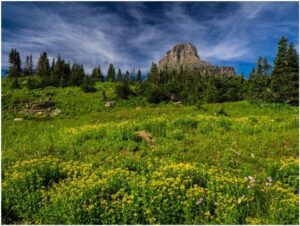
KEEPING THE PROMISE TO COMPLETE THE CULTURAL RESOURCE CHALLENGE
The National Park Service’s (NPS) stewardship responsibilities for the nation’s heritage resources are remarkable and extensive. The National Park System includes approximately 27,000 historic and prehistoric structures, an estimated two million archeological sites, and over 45 million natural, historic, and prehistoric objects. The National Historic Preservation Program encompasses all federal agencies, 59 states, and territories, 1,809 certified local governments, 574 American Indian tribes, 55 National Heritage Areas, and dozens of non-profit preservation organizations, and the general public. Over 90,000 properties are listed on the National Register of Historic Places, including almost 1.7 million historic buildings.
Approximately two-thirds of the 423 National Park System’s areas have been designated for historic or prehistoric significance and most park areas contain significant cultural resources. Even with this substantial portfolio, the NPS cultural resources program, including staffing and funding, have not kept pace with their growth to properly care for these resources. Many cultural resources, including historic buildings, museum objects, and archeological sites, are unmaintained, severely threatened, or degraded. As with other programs in the NPS, since 1997 there has been a loss of almost 30 percent of cultural resource management positions in our national parks, and huge losses continue as parks and regional offices continue to reduce staffing due to budget restraints.
Launched in 2013, the Cultural Resource Challenge (Challenge), a $200 million appropriation request, provides a strategic framework for NPS stewardship and completing partnership responsibilities for America’s cultural heritage. The Challenge builds on key programs, prioritizes the use of existing resources, and identifies critical actions that will best meet the needs and challenges confronting the NPS. The Challenge commits to strategically address the most critical urgent needs to save America’s beloved cultural heritage.
Since 2013, with increases to the Historic Preservation Fund (HPF), almost $100 million of the original Challenge request has been funded, and the Coalition supports full funding for the HPF at $150 million. However, key areas were never fully funded or addressed. We recommend that Congress commit to providing an additional $25 million among the four areas below in FY 2022 and in each of the succeeding three fiscal years to complete the Challenge at the total specified amounts:
I. PROVIDE PARKS AND PARTNERS ACCESS TO CULTURAL RESOURCE EXPERTISE
ONPS Base Funding Requested: $45.0 Million
This annual funding would allow one hundred percent of NPS regions to have professionals in the six basic cultural resource disciplines of historian, historical architect, historical landscape architect, archeologist, curator, and cultural anthropologist. This funding increases by 100 the number of parks that have at least one cultural resource expert on staff and ensures all parks have ready access to all basic cultural resource disciplines.
II. PROVIDE PARKS AND PARTNERS THE INFORMATION NEEDED TO MAKE FULLY INFORMED MANAGEMENT DECISIONS
ONPS Base Funding Requested: $36.0 Million
This annual funding would improve the baseline documentation information available to management at 280 parks. This information is critical for making sound long-term decisions for park managers across the country.
III. PRESERVE PARK RESOURCES
ONPS Base Funding Requested: $10.0 Million

This funding would allow the NPS to undertake 100 projects that stabilize archeological sites, cultural landscapes, and historic and prehistoric structures per year, or conduct preventive conservation on museum objects, or support scientific research on new threats to resources. Stabilization is the critical gap for preserving many of our historic structures and archeological sites as neither Cyclic Maintenance or Repair/Rehab appropriations fund this stabilization work.
IV. SUPPORT CRITICAL PARK PROGRAMS AND PARTNERS
NR&P Base Funding Requested: $10.0 Million
A $10 million operating annual increase in the National Recreation and Preservation (NR&P) funding for managing the national historic preservation program would support administration of the grant programs, documentation of nationally significant threatened resources, increased grants to support new preservation technology, and development of guidance to assist public and private owners in meeting the threats of a changing climate.

KEEPING THE PROMISE TO ADDRESS CLIMATE CHANGE
“Climate change is the existential threat to humanity. Unchecked, it is going to actually bake this planet. This is not hyperbole. It’s real. And we have a moral obligation.” – President Joe Biden
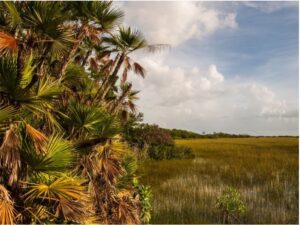
Climate change affects every unit of the National Park System and is a serious threat to park ecosystems, natural and cultural resources, visitors, and infrastructure. The effects are broad, and in some cases, irreversible: melting snowpack, permafrost and glaciers, shifting ranges of plants and animals, altering wildfire patterns, rising sea levels, and numerous other impacts. Shifts of entire biomes, and species ranges have already been documented in Yosemite, Sequoia and Kings Canyon, Joshua Tree, and Death Valley National Parks. Over 25% of parks lie in coastal areas at risk to sea-level rise and storm surge and almost one-third of the infrastructure within these coastal parks is considered highly exposed to one meter of sea-level rise.
The Coalition supports the National Park Service Climate Change Response Plan (CCRP) (https://www.nps.gov/subjects/climatechange/response.htm). The Response Plan will “help the NPS meet its mission by understanding, interpreting, and responding to climate change.” The plan ensures that parks have the best available science and information, which will be applied to address the specific needs of park managers and park partners as they confront the challenges of climate change.
The Coalition commends the NPS focus on a unified approach to address climate change effects, including in design and construction, energy efficiency and use of renewable energy sources, natural and cultural resources stewardship, visitor use and safety, as well as education and transportation. The strategies respond and adapt to climate change through improving operational sustainability, incorporating climate change adaptation into park planning and resource protection, conducting vulnerability assessments and research, and implementing relevant communication while taking every opportunity to mitigate carbon emissions.
Parks require factual and relevant information to foster the best possible decisions concerning the future of park infrastructure, resources, and visitor experiences so that future generations can enjoy and cherish our diverse American cultural and natural heritage.
Conducting vulnerability assessments followed by initiating adaptation strategies of individual national park units are high priorities to protect park resources—knowledge of climate change vulnerabilities is a prerequisite to developing adaptation strategies. Analyses of vulnerability to climate change exist for a very limited set of resources in fewer than half of the national park units. A structured approach to conducting vulnerability assessments across the NPS requires additional technical capacity to provide downscaled climate projections from climate models and to support national park planners and managers in developing adaptation strategies. Also critical is workforce training and funding for agreements or contracts to expedite projects. Critical and high-priority adaptation projects to address park or region-specific needs will guide future planning in an iterative process as techniques evolve and knowledge and understanding of climate change effects increases. Likely partners are USGS Climate Adaptation Science Centers, universities, and other land management agencies to leverage resources and expertise. Now, more than ever, transboundary coordination and cooperation are needed to achieve landscape-level ecosystem resilience and adaptability.
Funding for vulnerability assessments and mitigation response projects would:
(1) Provide analyses of the vulnerability of park resources and infrastructure to guide subsequent resource stewardship efforts and to inform decisions on asset planning, management, and investment for park infrastructure. This support addresses the NPS’s comprehensive efforts to provide scalable analyses to managers on the implications of environmental change of resources from the land/seascape-level to park-level. Estimated costs would augment existing staff in the CCRP with a team to focus only on vulnerability assessments and expedite the use of the information in park planning to accelerate the identification of key climate change vulnerabilities in national parks. The cost would be $3 million (see table below).
(2) Initiate high-priority projects in parks designed to add resilience, adaptation, resistance, and protection for some of the most vulnerable natural and cultural resources within the National Park System. The requested funding would support projects informed by vulnerability assessments of park natural and cultural resources to environmental change. The highest priority projects would advance resource (natural and cultural) and infrastructure resiliency and adaptation to climate change associated with rising sea levels, increased frequency and severity of flood events, thawing of permafrost, catastrophic mega-fires, prolonged drought conditions, and other consequences of environmental change. Examples of projects include modeling and analyses to identify high-priority areas to reduce future risks from fire and flooding, as well as design and engineering to adapt and protect historic structures and infrastructure. This increase provides subject matter expert services to park managers to design adaptation projects and includes an annual $3 million in project funds (see examples below).
| Climate Change Staffing | ||||||
| Project manager (agreements, contracts) | GS 12 | 1 | $136,000 | |||
| Technical support downscaling, projections | GS 12 | 1 | $136,000 | |||
| Cultural resources adaptation specialist | GS 12 | 1 | $136,000 | |||
| Natural resources adaptation specialist | GS 12 | 1 | $136,000 | |||
| Coastal engineer | GS 12 | 1 | $136,000 | |||
| Communication, training | GS 11 | 2 | $230,000 | |||
| Subtotal | 7 | $930,000 | ||||
| Task or interagency agreements or contracts | ||||||
| Vulnerability assessments, research to fill data gaps | $2,070,000 | |||||
|
Adaptation Response Projects (average 25 per year) |
$3,000,000 | |||||
| GRAND TOTAL FOR CLIMATE CHANGE RESPONSE | $6,000,000 | |||||
Project Examples in Queue:
-
-
- (Alaska coastal parks) Assessing seabird mortality along Arctic parks; Phase II: $192,621
- (Alaska Parks)Prioritize and assess vulnerable archaeological sites in Alaska: $74,100
- (All coastal parks)Building storm related coastal risk understanding: $297,228
- (All coastal parks)Develop adaptation strategies for facilities (including historical buildings, cultural landscapes) using existing exposure and vulnerability information: $380,000
- (All parks) Provide intern support to climate change science and adaptation projects through the NPS Scientist in Parks internship program, which includes Direct Hire Authority and specifically recruits diverse candidates ($300,000)
- (Appalachian National Scenic Trail) Restore Critical early successional Golden-winged Warbler habitat along the Appalachian Trail: $100,000
- (Casa Grande NM) Develop restoration strategies using biological soil crusts in the arid southwest: $191,000
- (Coastal parks) Initial scoping and partner engagement to determine nature-based solutions and connectivity for protecting or creating habitat for nesting species (e.g. sea turtles, shorebirds, horseshoe crabs, etc.): $150,000
- (Glacier NP) Saving all the Pieces: Translocation and Replication of Imperiled Westslope Cutthroat and Bull Trout: $367,000
- (Lake Clark NP) Identify temporal and spatial Shorebird use of the Lake Clark National Park Coast: $152,000
- (Lassen Volcanic NP) Fire planning, fuel treatment effectiveness, and vegetation change in a landscape altered by a large wildfire, Lassen Volcanic National Park. $50K
- (Lassen Volcanic NP) Understanding regional genetics to sustain Whitebark Pine: $188,000
- (Multiple parks) Evaluating effects of forest changes due to climatic shifts, disease, and fire on forest vertebrates: $281,216
- (Northeast Region coastal parks) Inspire cooperative Climate Change Adaptation through locally-scaled Vulnerability Analyses (total cost $300K. CCRP funded $120K in FY20. Balance= $180K)
- (Chesapeake and Ohio Canal National Historical Park) Propagate and restore endangered plant species in Globally Unique Habitats: $261,000
- (Pacific West and Intermountain Regions) Determine vulnerability of water-dependent resources and facilities under climate change in Southwest, Great Plains, and Intermountain west parks: $395,000
- (Saguaro NP) Restore Leopard Frogs and habitat in three major streams: $142,000
- (Sequoia, Kings Canyon, and Yosemite NPs) Restore Critical Habitat and populations of endangered frog species at 2 NPS Units ($400,000)
- (Sequoia, Kings Canyon, and Yosemite NPs) Assessment of the current condition and future vulnerability of sugar pine (Pinus lambertiana) in the Sierra Nevada: Evaluating the drivers of change in a declining species. (100K)
- (Southeast and Northeast Regions) Conduct a review of completed vulnerability assessments in storm-impacted parks to improve vulnerability assessment protocols based on predicted and realized impacts: $180,000
-
Download a PDF copy of this report here.
Prepared by: The Coalition to Protect America’s National Parks; All photos courtesy of Coalition Member Gary Davis, GEDApix.com; Information, specific recommendations, and text were provided from numerous individuals, organizations, and public sources. The Coalition wishes to thank all parties that helped to develop this request.
